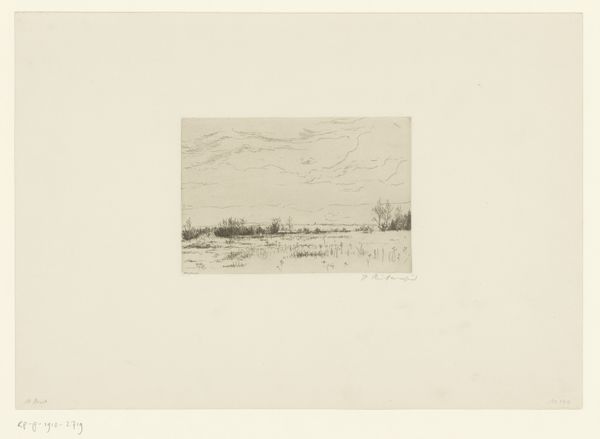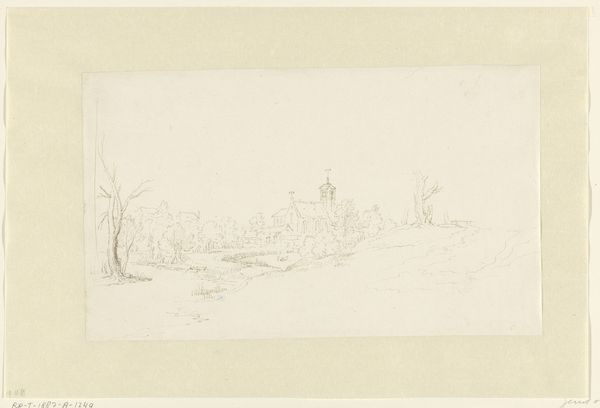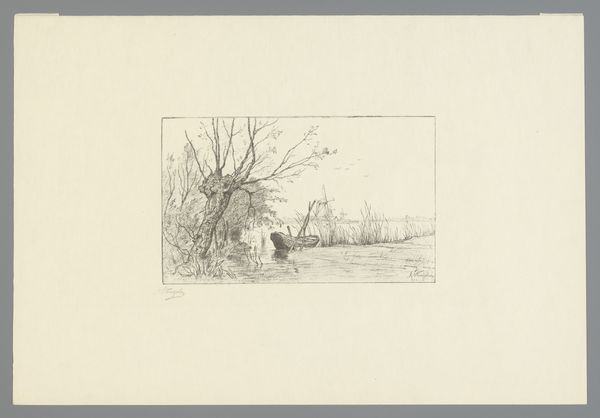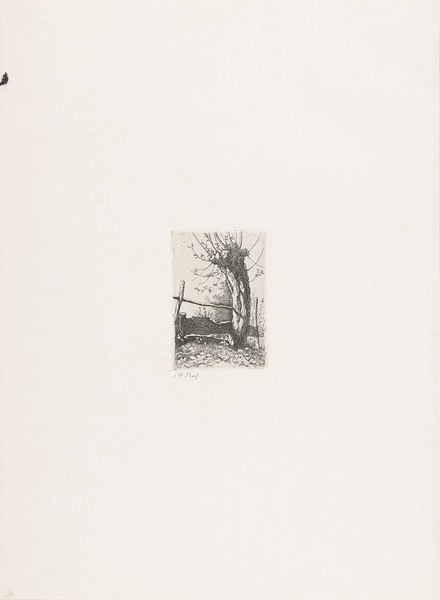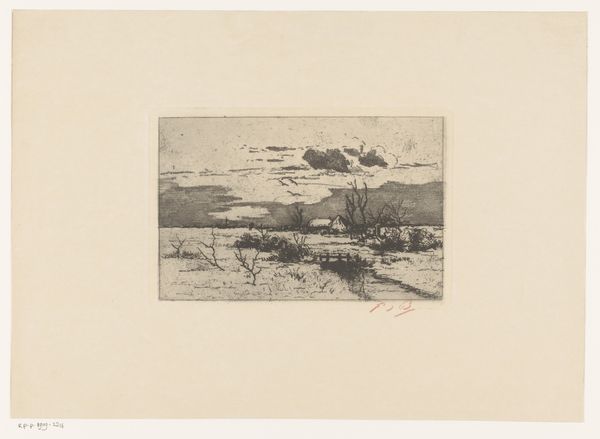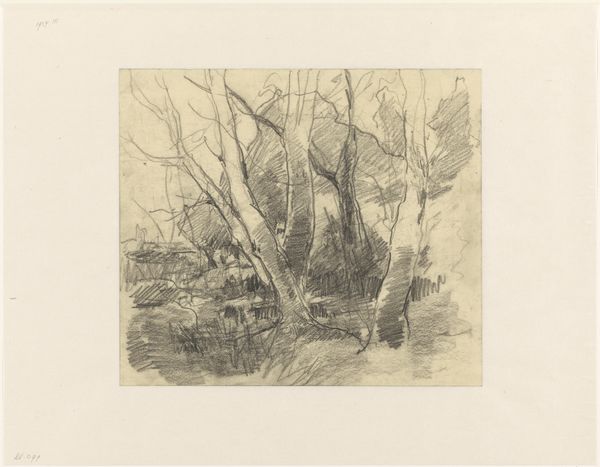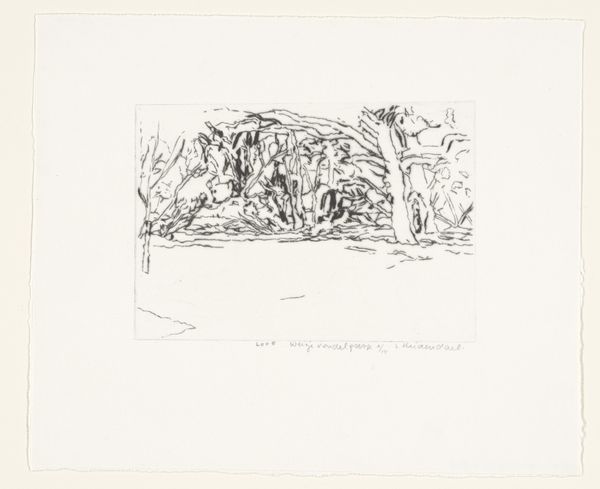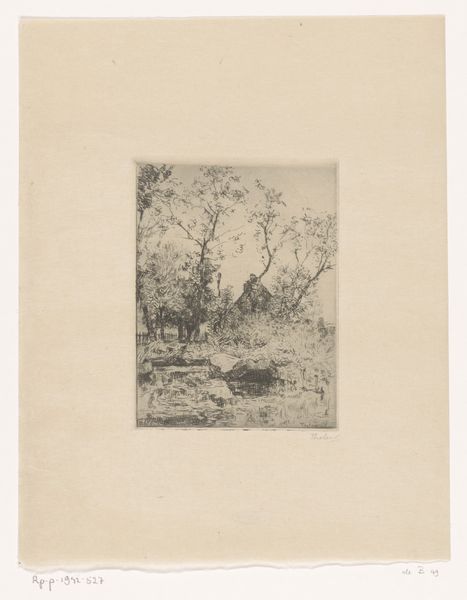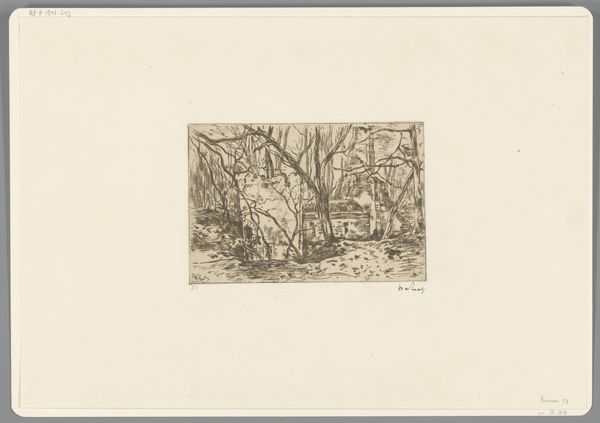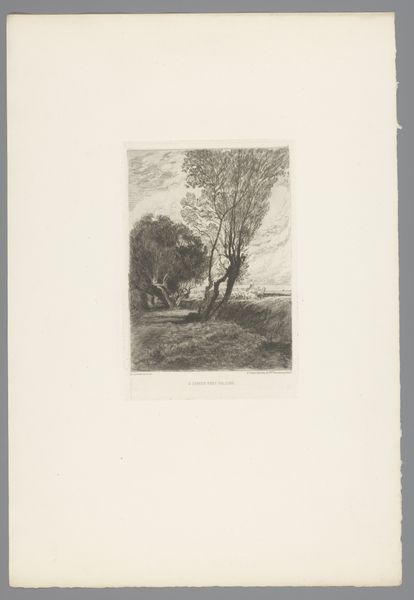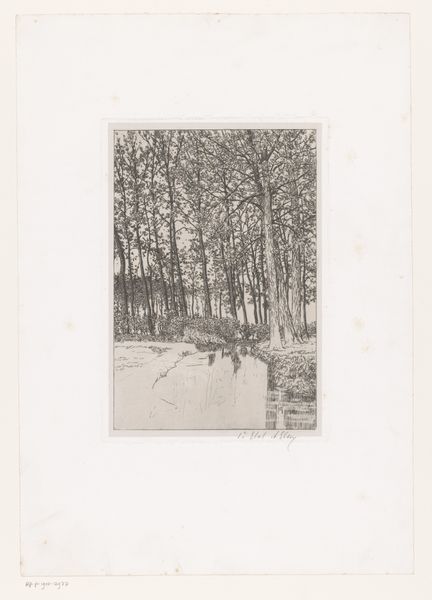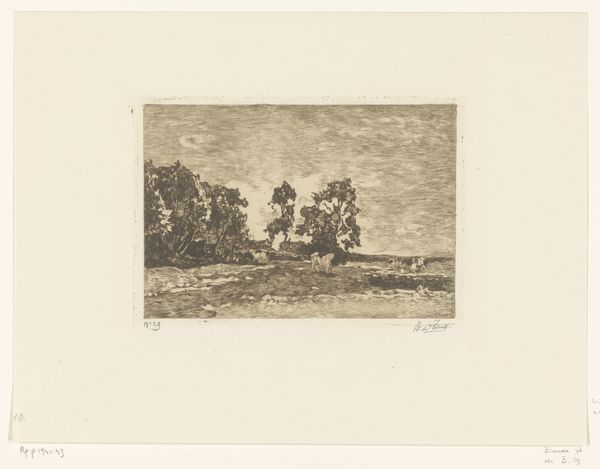
Dimensions: height 124 mm, width 185 mm
Copyright: Rijks Museum: Open Domain
Curator: Looking at Heinrich Reifferscheid's "Winterlandschap," created in 1909 using etching, graphite, and pencil on paper, one is immediately struck by its bleak yet captivating mood. What do you make of this landscape? Editor: Stark. Desolate, even. It speaks to the materiality of a stark winter day, the ground rendered bare, the skeletal trees etched with a simple but brutal truth. I'm drawn to how little it takes—graphite on paper—to evoke such a strong sense of place. Curator: I agree. Consider the symbolic weight of winter. In many cultural narratives, it represents dormancy, reflection, and the potential for renewal. Do you see that playing out here, despite its barren presentation? Editor: Potentially. But I'm equally drawn to the 'how' of its making. The visible marks of the pencil and etching—the hand of the artist so present. The material production is simple, replicable perhaps through prints, extending its reach beyond an individual artwork. It reminds us that the image is itself a commodity in a certain way. Curator: Yes, the print medium allows for wider distribution of the image and its symbolic message. The leafless trees, so central, possess strong symbolic association with the stripping away of excess, leaving only what’s essential for survival, but could the medium’s capability influence that reading? Editor: Certainly. Think of the contrast between an etching, readily reproducible, and an oil painting labored over for months. Each inherently changes the potential viewing public and cultural meaning. I suspect many such scenes were sketched and printed; how would that ubiquity shape reception and purpose? Curator: An important point! Considering how mass-produced images shape collective memory. The choice to use this method for landscape scenes reflects not just personal expression but perhaps broader cultural habits around documentation or leisure practices in early 20th-century society. It has shaped how we remember what winter could and did look like. Editor: Absolutely. For me, the enduring power is found not only in its symbolic resonance, but from acknowledging production. Recognizing its simplicity only deepens our sense of winter's austere beauty. Curator: Precisely! Reifferscheid’s Winterlandschap, on deeper inspection, becomes so much more than just a simple landscape; the piece creates discourse between materials, intention, culture and memory.
Comments
No comments
Be the first to comment and join the conversation on the ultimate creative platform.
